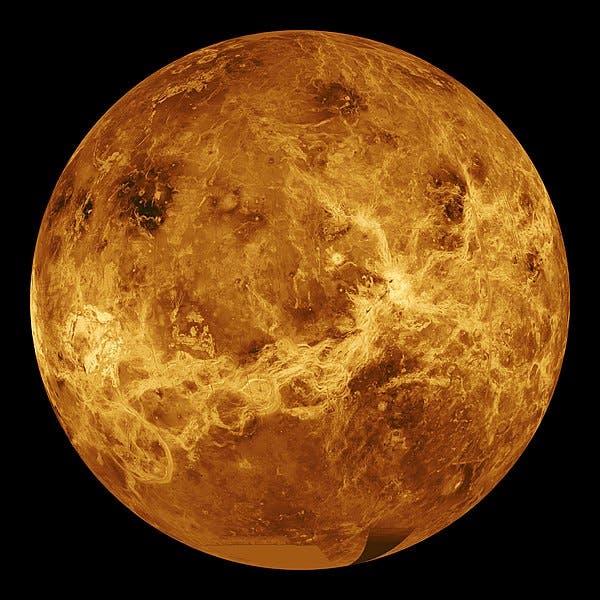Venus might still harbor active volcanoes, a new paper reports.

Earth and Venus are similar enough in size and mass that they are sometimes referred to as being ‘sister planets’. But, apart from that, the two are very different. Venus is covered in a super-thick and opaque atmosphere, so we have had very few opportunities to actually see its surface. However, new research at the USRA’s Lunar and Planetary Institute (LPI) suggests that the second planet from the Sun may still be volcanically active.
So far, Earth has been the only planet in the solar system with confirmed volcanic activity. The other three bodies known to have active volcanoes are Io, a moon of Jupiter, Triton, a moon of Neptune, and Enceladus, a moon of Saturn.
Volcanoes near you
“If Venus is indeed active today, it would make a great place to visit to better understand the interiors of planets,” explains Dr. Justin Filiberto, a staff scientist with the LPI. “For example, we could study how planets cool and why the Earth and Venus have active volcanism, but Mars does not.”
“Future missions should be able to see these flows and changes in the surface and provide concrete evidence of its activity.”
Most planets and moons in the solar system show signs of ancient volcanism. Venus is no exception: readings in the 1990s showed that Venus had been volcanically active as recently as 2.5 million years ago and that its surface is littered with volcanic features to this day. However, because Venus is so hard to observe and visit, we’re not sure if its volcanoes are active or dormant.
The new study, led by Dr. Filiberto, drew on data recorded during the 2000s by ESA’s Venus Express orbiter, which measured infrared light coming from the planet’s surface at night. Through this data, the team was able to map the lava flows on Venus’ surface and, by comparing this against previous data, track how they evolved between the 1990s and 2000s. ESA’s data also allowed them to tease apart fresh lava flows from dormant ones.
One thing that prevented us from accurately determining when Venus’ volcanoes erupted was that we didn’t know how fast its (fresh) magma alters once on the surface. In order to determine this, Dr. Filiberto and his team simulated Venus’ atmosphere in their laboratory and then investigated how it impacts the evolution of lava.
They showed that olivine (a heavy, green mineral that’s very abundant in basalt rock) would rapidly react with gases in Venus’ atmosphere, becoming coated with magnetite and hematite (iron oxide minerals) within days. The near-infrared light emitted by these minerals are consistent with data obtained by the Venus Express mission, the team explains, and would disappear within days. This observation means that the lava flows seen on Venus must have only been a few days old at most, which would strongly indicate that the planet is still volcanically active
We won’t be able to fact-check the findings until we send a new craft to Venus. Several such missions are in the works for the future, including India’s Shukrayaan-1 orbiter and Russia’s Venera-D spacecraft, scheduled to launch by 2023 and 2026, respectively.
The paper “Present-day volcanism on Venus as evidenced from weathering rates of olivine” has been published in the journal Science Advances.









